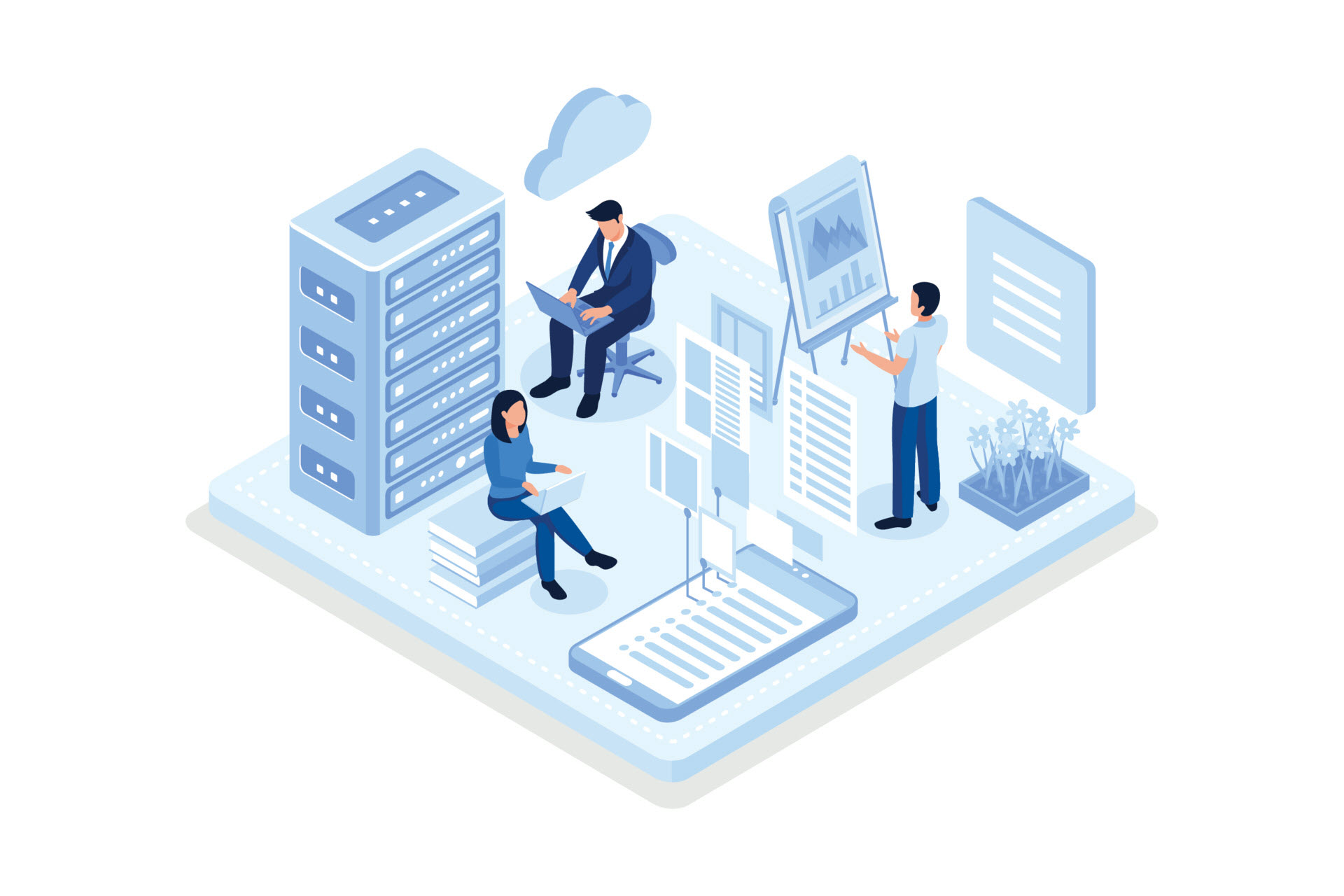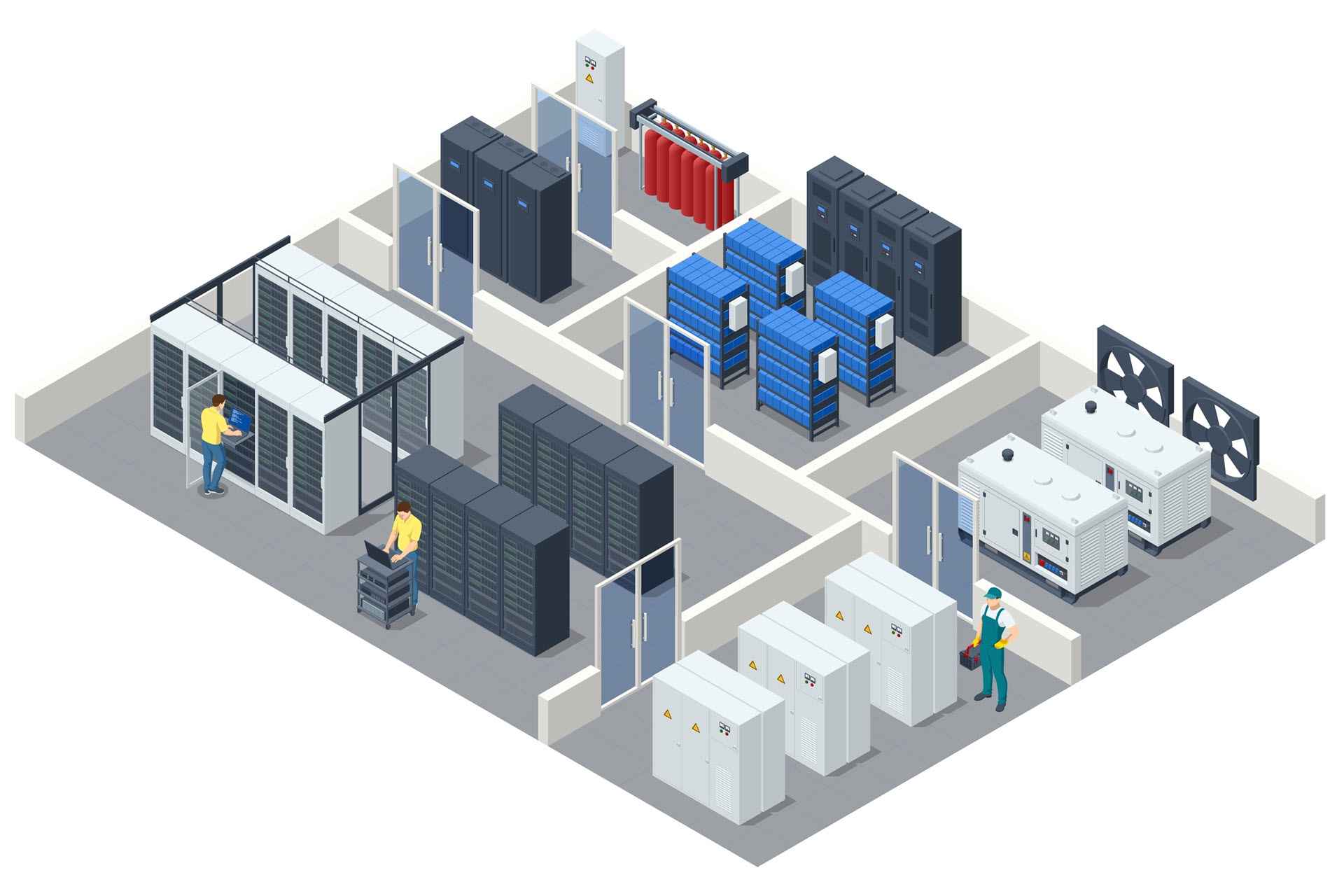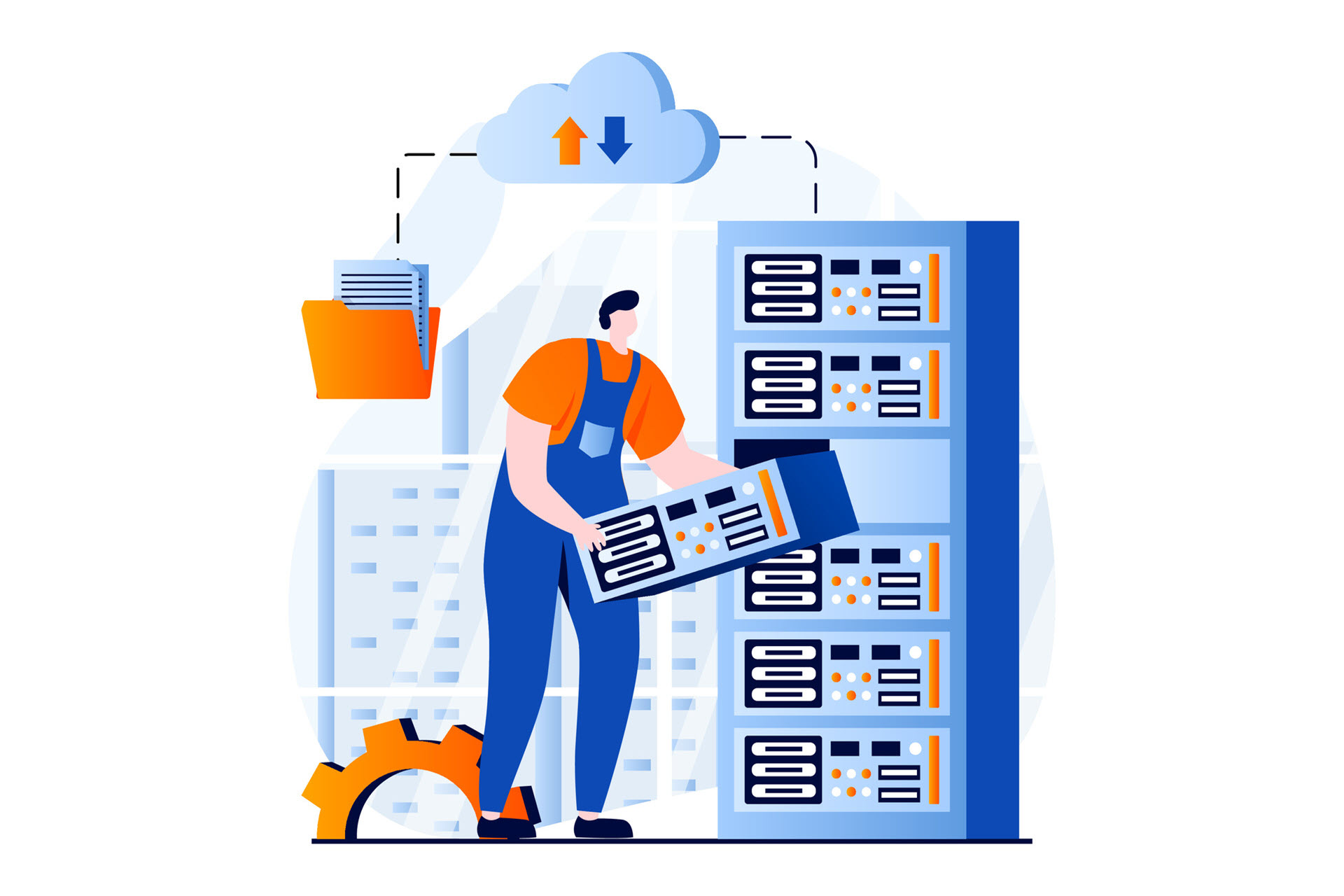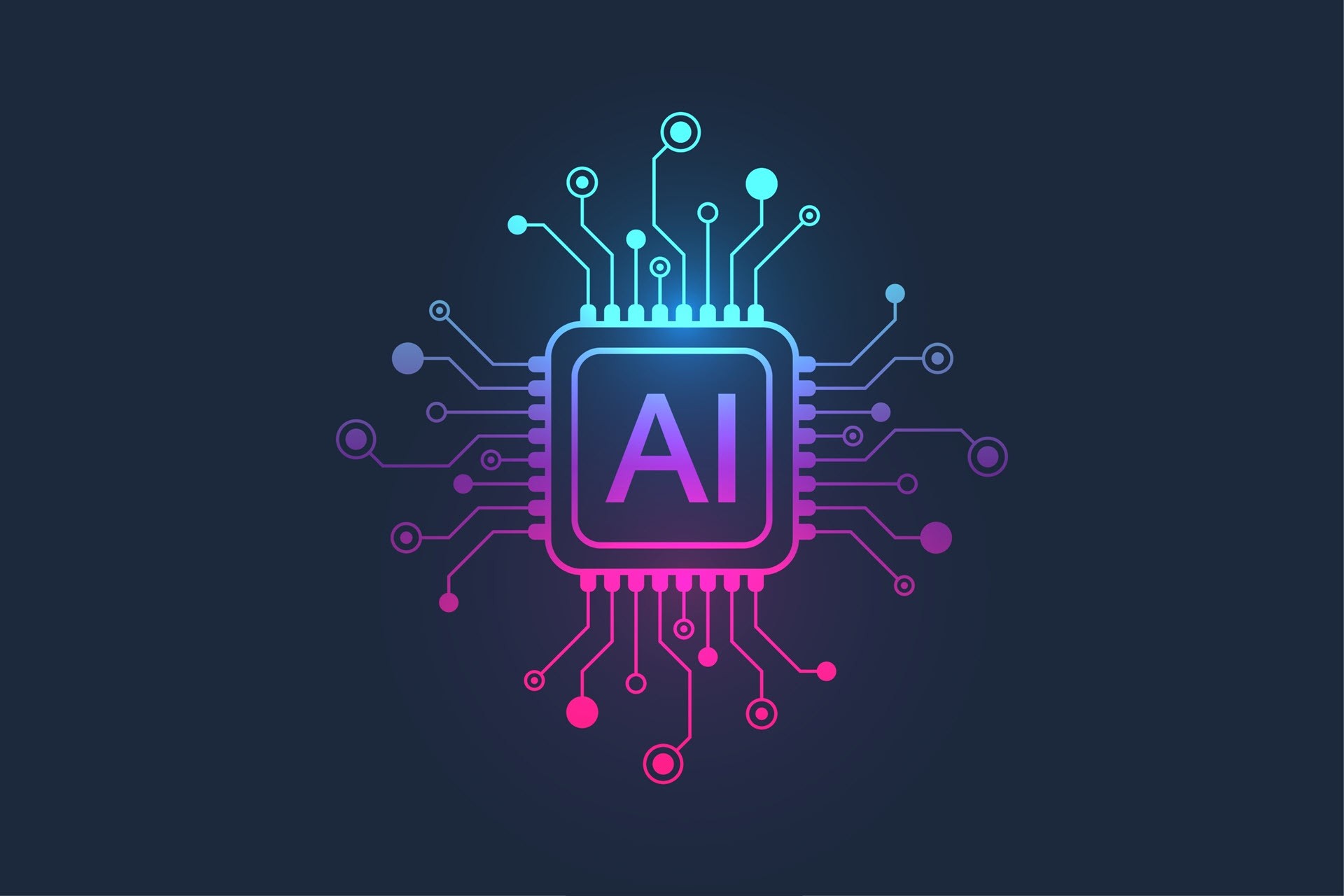Artificial intelligence (AI) has transformed the way modern data centers are designed, built, and operated. Traditional facilities, optimized for general-purpose computing, often struggle to handle the scale and intensity of AI workloads, which require massive processing power, low-latency networking, and highly efficient cooling systems.
AI data centers are purpose-built environments that integrate advanced hardware, high-performance interconnects, and intelligent orchestration tools to support machine learning, deep learning, and large-scale data analytics.
This article provides an in-depth examination of AI data centers, their benefits, and the specialized features that distinguish them from traditional data center facilities.
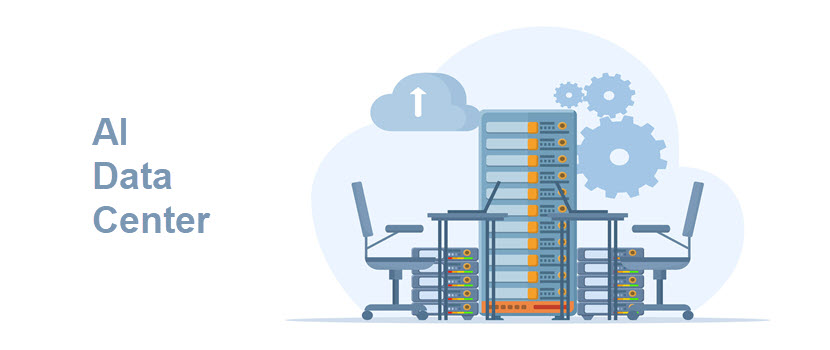
What Is an AI Data Center?
An AI data center houses an IT infrastructure for building and deploying artificial intelligence applications and services. This infrastructure combines high-bandwidth/low-latency networking, scalable high-performance storage, and advanced power and cooling to sustain dense accelerator clusters. They are designed to support the rigorous training of AI and machine learning models.
AI data centers rely on software-defined resource management and orchestration frameworks to allocate compute, storage, and networking resources dynamically across distributed AI workloads. An AI data center serves as the backbone for applications such as large language models, recommendation engines, and predictive analytics that turn vast amounts of unstructured data into real-time insights.
Learn how to upgrade your data center to meet evolving business demands in our article on data center transformation.
AI Data Center Features
Artificial intelligence workloads place unique demands on data center infrastructure requiring far more than traditional computers and storage capabilities. To meet these requirements, AI data centers integrate specialized hardware, optimized interconnects, advanced cooling, and intelligent management systems. Below are the core features that define modern AI data centers.
High-Performance Computing Infrastructure
The foundation of an AI data center is its compute layer, built around accelerators such as GPUs, TPUs, NPUs, FPGAs, or custom ASICs. Unlike CPUs, which excel at sequential tasks, AI accelerators deliver massive parallelism, which is critical for machine learning, natural language processing (NLP), and deep learning models.
Each accelerator type serves a distinct role:
- Tensor processing units (TPUs). Specialized for matrix and tensor computations, significantly accelerating model training and inference.
- Neural processing units (NPUs). Designed to mimic the brain’s neural pathways, enabling efficient real-time processing.
- Field-programmable gate arrays (FPGAs). Reconfigurable integrated circuits that can be customized for tasks such as inference acceleration and real-time data analysis.
- Custom application-specific integrated circuits (ASICs). Purpose-built chips optimized for narrowly defined machine learning tasks, including neural network training and inference.
Clusters of these devices are deployed in high-density server nodes, often interconnected with specialized fabrics to maximize throughput. Compute orchestration frameworks ensure that workloads are distributed across nodes efficiently, minimizing idle resources and accelerating training cycles.
High-Bandwidth, Low-Latency Networking
AI workloads rely on rapid data movement between compute nodes, storage systems, and external data sources. To meet these demands, AI data centers implement advanced networking technologies that provide the bandwidth and low latency required for distributed processing.
Key networking technologies include:
- InfiniBand. A high-performance interconnect widely used in HPC and AI clusters, offering extremely low latency and high throughput.
- RoCE (RDMA over Converged Ethernet). Allows direct memory access between servers over Ethernet, reducing CPU overhead and improving data transfer efficiency.
- CXL (Compute Express Link). A next-generation standard for memory and accelerator interconnects, enabling resource sharing and reduced bottlenecks in heterogeneous compute environments.
- NVLink. NVIDIA’s high-speed interconnect that enables fast GPU-to-GPU communication within and across nodes.
Advanced features like congestion control, adaptive routing, and network telemetry are essential to prevent bottlenecks during gradient synchronization in distributed training. Without these optimizations, training times for large models could stretch from weeks into months.
By minimizing latency and maximizing throughput, AI data centers enable distributed clusters to operate as a unified compute resource, ensuring real-time data flow for smarter and faster decision-making.
Scalable, High-Performance Storage
AI workloads generate and process massive volumes of data, requiring storage systems that deliver both high capacity and extreme performance. Unlike traditional applications, which can tolerate higher latencies, AI training and inference pipelines depend on storage that can feed accelerators at line rate without interruption.
Key storage technologies include:
- NVMe and NVMe-over-Fabrics (NVMe-oF). Provide ultra-low latency and high IOPS, ensuring accelerators are not starved for data during training.
- Object storage (e.g., Ceph, MinIO). Offers scalable capacity for unstructured datasets, such as images, video, and text corpora, commonly used in model training.
- Parallel file systems (e.g., Lustre, IBM Spectrum Scale). Distribute data across multiple servers to achieve the throughput required for large-scale AI workloads.
- Data caching and prefetching. Reduce latency by staging frequently accessed datasets closer to compute nodes.
- Tiered storage architectures. Combine high-performance SSD tiers for active training data with cost-efficient HDD or cold storage tiers for archival datasets.
By integrating these technologies, AI data centers ensure that vast datasets can be ingested, processed, and retrieved at the speed required for modern training and inference cycles. The result is a storage architecture that balances performance, scalability, and cost-efficiency, supporting AI workloads from experimentation to production deployment.
Advanced Cooling and Power Delivery
The density of AI hardware significantly increases both power consumption and heat output compared to traditional servers. To ensure consistent performance, AI data centers must adopt advanced cooling and power management strategies.
Key approaches include:
- Direct-to-chip liquid cooling. Removes heat directly from processors to maintain stable operating temperatures.
- Rear-door heat exchangers. Capture and remove hot air at the rack level to improve airflow efficiency.
- Immersion cooling. Submerges hardware in thermally conductive liquid for highly efficient heat dissipation.
- Intelligent PDUs. Provide granular monitoring and control of power usage across high-density racks.
- Redundant high-capacity power feeds. Ensure reliable energy delivery and minimize downtime risk.
- Renewable energy integration. Leverages solar, wind, or hydropower to align operations with sustainability goals.
- Energy-aware workload scheduling. Optimizes performance by distributing loads to reduce peak energy draw.
By combining advanced cooling systems with intelligent power management, AI data centers can sustain high-performance clusters while balancing operational efficiency and environmental responsibility.
According to Goldman Sachs, AI data centers are anticipated to drive a 165% increase in power consumption before 2030, introducing concerns about longer downtime and frequent outages.
Orchestration and Resource Management
AI workloads are highly resource-intensive, often requiring coordination across thousands of compute nodes. To meet these demands, AI data centers depend on orchestration frameworks that dynamically allocate compute, memory, and storage resources while maintaining efficiency and resiliency.
Key orchestration and resource management functions include:
- Frameworks (Kubernetes, SLURM, Ray). Dynamically assign CPU, GPU, memory, and storage resources, ensuring utilization aligns with workload demands.
- Distributed training support. Manages gradient synchronization, checkpointing, and fault recovery, allowing training to continue despite node failures.
- Job scheduling. Prioritizes workloads based on urgency, experiment phase, or time sensitivity.
- Predictive placement. Anticipates workload needs and assigns resources proactively to avoid bottlenecks.
- Auto-scaling. Expands clusters during training phases and scales down during inference workloads to balance cost and performance.
- AI-driven optimization. Uses machine learning to detect inefficiencies and autonomously improve scheduling and allocation decisions.
- Monitoring and telemetry integration. Provides real-time insights into GPU utilization, memory bandwidth, network throughput, and power consumption.
By combining these capabilities, orchestration systems ensure that AI data centers operate at peak efficiency, keep expensive hardware consistently utilized, and maximize return on infrastructure investments.
Security and Data Governance
AI data centers handle massive volumes of sensitive data, including proprietary datasets, personal information, and regulated records. Ensuring robust security and governance is essential to maintain compliance, protect intellectual property, and preserve trust.
Key practices include:
- Zero trust architecture. Enforces continuous authentication and authorization, ensuring no user or system is implicitly trusted.
- Access control and identity management. Implements role-based access control (RBAC), multi-factor authentication (MFA), and identity federation across client and internal systems.
- Encryption. Protects data both at rest and in transit using strong cryptographic protocols such as AES-256 and TLS.
- Audit logging and monitoring. Provides detailed event tracking for compliance frameworks such as GDPR, HIPAA, and ISO 27001.
- Data anonymization and masking. Reduces exposure of sensitive attributes in training datasets without compromising model accuracy.
- Data lineage and provenance. Tracks the origin, transformations, and usage of datasets to ensure transparency and reproducibility in AI training.
- Regulatory compliance integration. Embeds controls for industry-specific standards, ensuring that AI workloads meet jurisdictional and sectoral requirements.
Together, these measures ensure that AI data centers not only deliver performance at scale but also safeguard sensitive data, maintain regulatory compliance, and uphold ethical standards in AI development and deployment.
The first ever legal framework for AI development and deployment is the EU AI Act.
AI Data Center vs. Traditional Data Center
Here’s a detailed comparison between AI data centers and traditional data centers in a table:
| Aspect | AI data center | Traditional data center |
| Purpose | Optimized for training and inference of AI/ML workloads, requires extreme compute, storage, and networking performance. | Built for general-purpose IT workloads such as web hosting, enterprise apps, virtualization, and databases. |
| Compute Hardware | High-density servers with GPUs, TPUs, FPGAs, or custom ASICs designed for parallel processing and tensor operations. | Primarily CPU-based servers with moderate use of GPUs for specialized tasks. |
| Networking | Uses ultra-low latency, high-bandwidth fabrics like InfiniBand, NVLink, RoCE, or CXL to support distributed AI clusters. | Standard Ethernet networks optimized for business applications and client-server communication. |
| Storage | High-performance storage with NVMe, NVMe-oF, parallel file systems, and object storage for unstructured data at scale. | Traditional SAN/NAS or cloud-integrated storage, optimized for structured data and mixed workloads. |
| Cooling Technologies | Advanced solutions such as liquid cooling, immersion cooling, and rear-door heat exchangers to handle high power density. | Predominantly air cooling (CRAC/CRAH units, raised floor cooling) suitable for lower-density deployments. |
| Power Requirements | Extremely high per-rack power density (30–100+ kW per rack) with redundant, intelligent power delivery systems. | Moderate rack densities (5–15 kW per rack) with conventional power distribution. |
| Orchestration and Management | Relies on AI/ML-aware orchestration (Kubernetes, SLURM, Ray) for large-scale cluster scheduling and distributed training. | Utilizes virtualization and container management platforms for workload consolidation and business continuity. |
| Security and Compliance | Enhanced with secure enclaves, hardware root of trust, and strong data governance for AI model/data integrity. | Standard enterprise security (firewalls, RBAC, encryption) focused on business data protection. |
| Sustainability | Strong focus on energy efficiency, renewable integration, and optimizing PUE/CUE to offset high energy usage. | General energy efficiency practices, but with less pressure from AI-scale compute demands. |
| Use Cases | Large language models, computer vision, recommendation systems, autonomous driving, predictive analytics. | ERP systems, databases, email hosting, virtualization, web services, and enterprise apps. |
AI Data Center Benefits
AI data centers offer far more capabilities than traditional data centers. Let’s go through each of them:
- Scalability. AI data centers handle a wide range of workloads that require constant fine-tuning and inference. The AI data center framework is designed to scale both horizontally (adding more nodes) and vertically (deploying denser compute per rack) to enable dynamic resource allocation.
- Optimized data throughput. With high-performance storage and low-latency networking, AI data centers can feed massive volumes of training data to accelerators without creating bottlenecks. Technologies like NVMe-oF, parallel file systems, and InfiniBand interconnects ensure consistent data throughput, allowing AI clusters to operate at peak efficiency.
- Operation and energy efficiency. AI automates tasks such as workload distribution, resource allocation, and maintenance to ensure optimal resource use and higher productivity. AI data centers implement advanced cooling methods and utilization strategies that reduce power consumption and minimize waste.
- Resource utilization. Through advanced orchestration and resource management, AI data centers maximize the use of available hardware. Features like GPU partitioning, job prioritization, and workload migration ensure that compute, memory, and storage resources are not underutilized. This leads to higher ROI, as organizations can run more experiments and inference tasks with the same infrastructure footprint.
- Automated operations. With AI implementation, human intervention is no longer required for many tasks, from implementation to maintenance. Less human intervention reduces errors, ensuring minimal downtime and outages.
- Optimized model training time. One of the most significant benefits of an AI data center is the ability to dramatically shorten training cycles for complex models. Clusters of GPUs, TPUs, or custom ASICs deliver massive parallelism, processing billions of parameters simultaneously. These resources, combined with high-bandwidth interconnects, reduce training time from months to days or even hours, enabling faster iteration and innovation in AI development.
- Future proofing. AI data centers can successfully integrate emerging technologies and support long-term AI initiatives. They enable organizations to deploy cutting-edge applications, including autonomous vehicles, natural language processing, recommendation systems, and computer vision.
AI data centers provide many benefits in terms of scalability, efficiency, and automation. However, there are some challenges to keep in mind as well.
AI Data Center Challenges
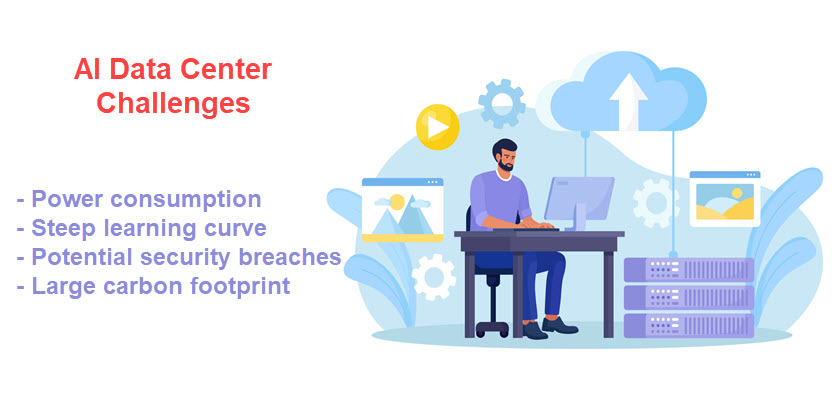
AI data center users should put extra effort into managing downsides such as a lack of sustainability and management complexity. Let’s go through each of the AI data center challenges in more detail:
- High operational costs. AI data centers require a significant upfront investment into hardware and high-bandwidth networking. Organizations should account for higher energy consumption, advanced cooling requirements, and ongoing maintenance.
- Infrastructure complexity. Managing an AI data center is far more complex than operating a traditional facility. Orchestration must account for GPU scheduling, distributed training synchronization, and large-scale data throughput optimization. These requirements introduce steep learning curves for IT teams and often demand specialized skills that are not widely available in the workforce.
- Difficult data management. AI data centers manage vast amounts of data that require adequate storage and processing. Managing this data requires a complex infrastructure framework and high-performance storage.
- Security risks. AI data often contains confidential personal, financial, and proprietary information. That’s why AI data centers must implement advanced security methods, such as confidential computing, the principle of least privilege, and encryption.
- Sustainability issues. The energy intensity of AI clusters makes sustainability a major concern. Although efficiency improvements and renewable energy integration can help, AI data centers still have a significant carbon footprint. Meeting both organizational performance goals and environmental responsibility standards requires careful balancing and ongoing investment in greener technologies.
As artificial intelligence develops, its framework must actively promote positive change and mitigate risks of data breaches, high costs, and negative climate effects.
Read more about the effects of artificial intelligence on your data center (both positive and negative) in our article AI impact on data centers.
Choosing an AI-Ready Data Center
Selecting an AI-ready data center requires more than evaluating raw compute capacity. Organizations must consider a combination of hardware, networking, storage, cooling, and operational practices that together determine whether the environment can support the scale and performance requirements of AI workloads. Below are the key factors to evaluate when choosing or building an AI-optimized facility.
Specialized Compute Infrastructure
The first consideration is whether the data center offers access to high-performance compute resources such as GPUs, TPUs, FPGAs, or custom ASICs. These accelerators are the backbone of AI training and inference, and their availability, density, and compatibility with orchestration frameworks will directly impact workload efficiency. Facilities designed for AI should also support GPU partitioning and multi-tenant accelerator use, enabling flexible resource sharing.
Scalable Storage Architecture
Since AI workloads consume vast amounts of training data, an AI-ready data center must feature high-performance storage systems with NVMe or NVMe-oF support, parallel file systems, and object storage options. The ability to handle unstructured data at scale is essential, along with intelligent tiering that moves less frequently accessed data to lower-cost storage without interrupting workloads.
High-Bandwidth Networking
Distributed AI clusters rely on ultra-low latency, high-bandwidth networking to synchronize computations and move large datasets quickly. When selecting an AI-ready facility, look for technologies such as InfiniBand, RoCE, NVLink, or CXL interconnects. These capabilities ensure minimal bottlenecks during distributed training and allow large workloads to scale efficiently across many nodes.
Power and Cooling Capacity
AI racks often consume 30–100+ kW compared to 5–15 kW in traditional deployments. Choosing a facility with advanced power distribution systems and liquid or immersion cooling capabilities ensures stable operation under such high densities. Facilities should also provide redundancy and energy monitoring to prevent downtime and improve power efficiency.
Security and Compliance Readiness
Since AI workloads often involve sensitive or regulated data, ensure the data center supports advanced security features such as hardware root of trust, confidential computing, and encryption for data in transit and at rest. Facilities should also meet compliance frameworks like GDPR, HIPAA, or ISO standards, particularly for industries with strict regulatory oversight.
Orchestration and Software Ecosystem
An AI-ready data center must integrate seamlessly with orchestration platforms such as Kubernetes, SLURM, or Ray, providing GPU-aware scheduling, fault tolerance, and workload migration. Built-in monitoring and telemetry should feed real-time metrics into these systems to allow predictive scaling and optimal resource utilization. Without this integration, even advanced hardware may remain underutilized.
Sustainability Practices
Finally, an AI-ready data center should have clear strategies for sustainability. This includes renewable energy sourcing, advanced cooling systems with low PUE (power usage effectiveness), and AI-assisted energy management tools. With AI workloads pushing the limits of energy consumption, sustainability is not only an environmental concern but also a cost and compliance factor.
How Can phoenixNAP Help?
phoenixNAP provides the specialized infrastructure required to support AI-driven workloads at scale, offering a balance of performance, flexibility, and cost-efficiency. With our bare metal cloud platform, organizations can deploy high-density GPU servers on demand for training and inference without the overhead of traditional procurement. Advanced networking options, including private Layer 2 connectivity and VRF/BGP support, enable low-latency data pipelines between distributed clusters, while scalable storage solutions ensure high-throughput access to massive datasets.
phoenixNAP’s global data center footprint is backed by advanced power and cooling systems designed to handle AI’s demanding densities, along with strong security and compliance frameworks to protect sensitive data. Whether building a proof of concept, scaling large model training, or running real-time AI applications, phoenixNAP delivers the infrastructure foundation organizations need to accelerate innovation while optimizing costs.
Learn more about phoenixNAP bare metal cloud pricing and choose the most suitable plan for your business.
AI Data Centers - Powering The Future of AI
AI data centers represent the backbone of the next wave of digital transformation. By combining specialized accelerators, high-bandwidth networking, advanced storage, efficient cooling, and intelligent orchestration, these facilities provide the foundation for training and deploying increasingly complex models. As technologies mature and new innovations emerge, AI data centers will continue to evolve, offering users greater performance, efficiency, and scalability. For organizations investing in AI, the future of data centers is not just about infrastructure; it is about enabling faster innovation, smarter decision-making, and sustainable growth.
